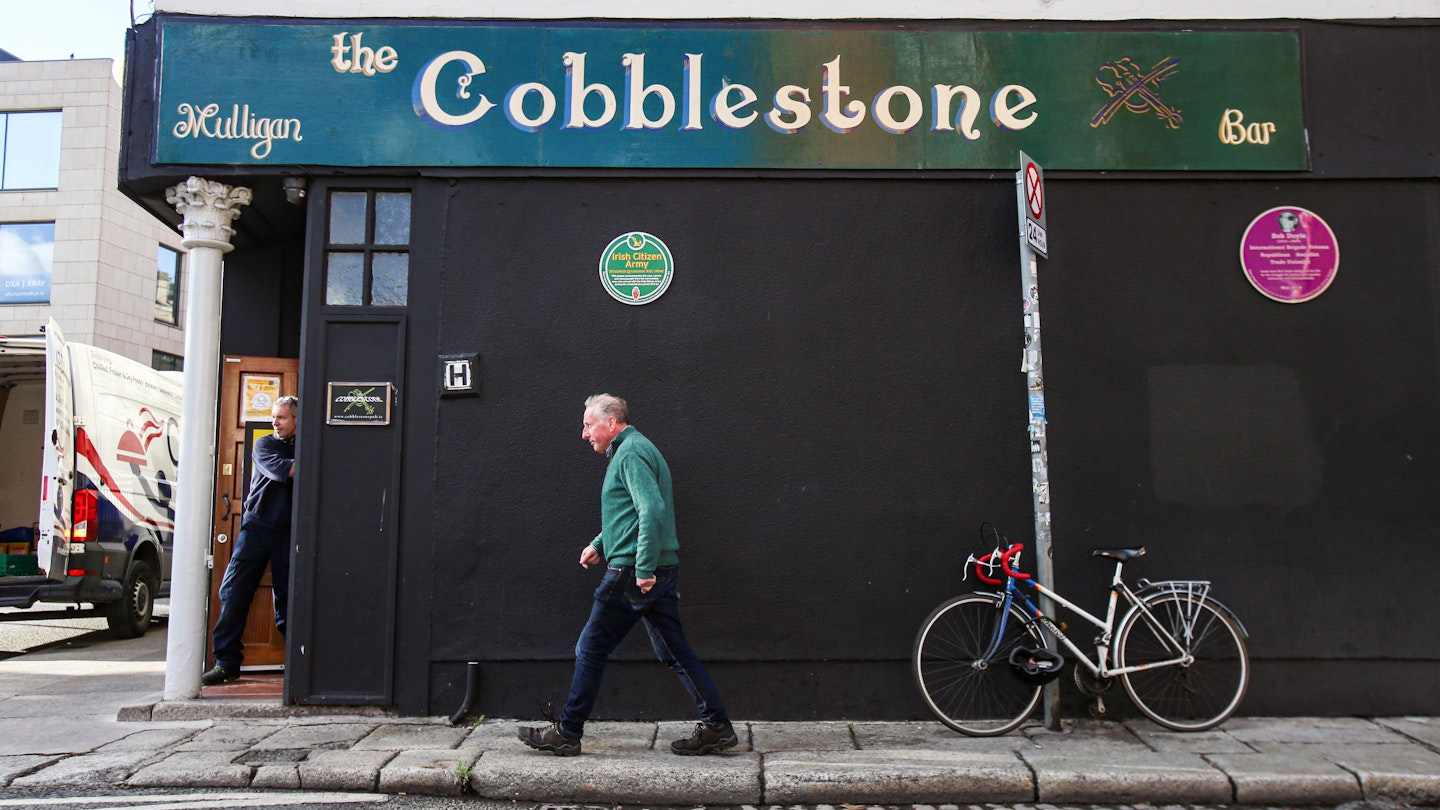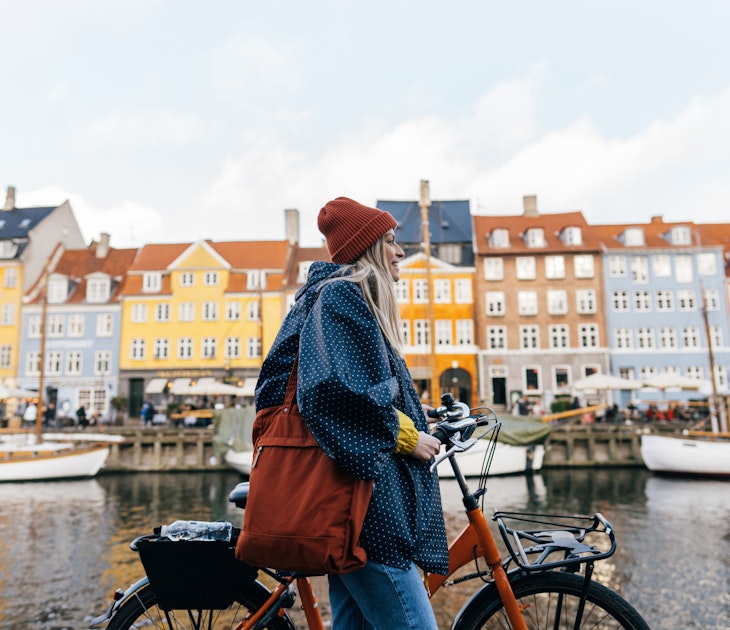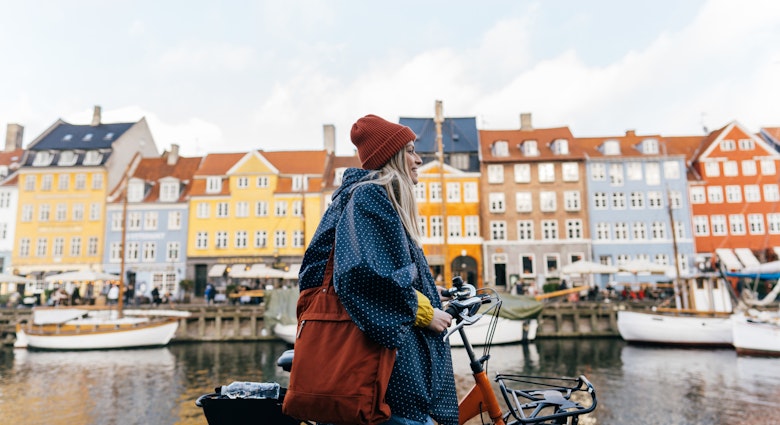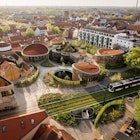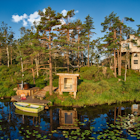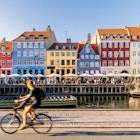Dublin’s nightlife is about the people as much as the places and those people are filled with a new kind of determination to make Dublin a better place. One of them is Louise Bruton. Here she explains how the city’s music venues have formed a backdrop to her life.
When I walk around Dublin, I encounter memories. Despite the ever-changing shopfronts and skylines, music and art are the beating heart of this city and each street provides a flashback to the past. Even on the quietest midweek morning, cobblestoned alleys hum with the excitement from the entry queue to a long-awaited gig and empty smoking areas still rattle from the heated post-show discussion.
From using fake IDs to enter basement shows in grungy bars and discovering dance music in the vaults of converted train stations, I grew up here in more ways than one. The cool spots don’t stay hot for long because something new will always replace them but in every decade, the creative, music and arts scene of Dublin faces a new fight against developers for space in this ever-changing city. Surviving economic recessions, lockdowns and grappling with daily gentrification, some venues change location while others cease to exist but something stronger endures.

Less trad, more global: Irish music stars of now
Dublin’s musical landscape has never been so exciting. What used to be overrun with bearded singer-songwriters is now diverse in genre, gender and race. Irish pop stars no longer come in the shape of a five-piece boy band but they are comedic geniuses like CMAT, emotional conductors like Saint Sister and slick as hell like Soulé. Folk has never been so current with Lankum, Lisa O’Neill and Lisa Hannigan leading the charge and our hip-hop heroes Jafaris, Kojaque and JYellowL push stylistic boundaries and rap proudly in their hometown accents.
Our rock stars include the tough but soft Pillow Queens, the messers Fontaines D.C and the experimental noise merchants Gilla Band (formerly known as Girl Band) and our electronic community is running rife with acts like Krystal Klear, R.kitt, Kormac, Eliza, Maria Somerville and sohotsospicy contributing to Ireland’s house, techno and ambient scenes. We have so much going on but, in what feels like a never-ending cycle of venue closures, we have few places left to experience these acts live.
21 incredible places to visit in Ireland beyond the Cliffs of Moher

A lingering legacy of music venues from the past
Every city mourns the loss of a historic music venue - New York’s punk venue the CBGB, London’s iconic Astoria, Manchester’s rave birthplace The Haçienda - and Dublin is no exception. The Adelphi Cinema saw the only Dublin appearance from The Beatles in 1963 and it’s now the car park entrance to a department store. The Top Hat Ballroom charged an entrance fee of £8 to catch the double bill of Sonic Youth and Nirvana in 1991 but was later demolished to build apartments and the inner northside city venue SFX, which had Nine Inch Nails, R.E.M, Bjork and Alannis Morrissette grace its stage, was also flattened to make way for apartments.
Read more: How to find ‘real’ traditional Irish music in Dublin
When landmarks like The Baggot Inn, where U2 first held a live residency, is now a Mexican-themed restaurant and “party cavern” named Xico and Countdown Club, where Thin Lizzy members Eric Bell and Eric Wrixon first met Phil Lynott and Brian Downey in 1969, is now a takeaway restaurant, music lovers are left baffled.
While some of these venues were falling into a state of disrepair and playing loose with health and safety regulations, the latest rush of cultural demolition sees sorely-needed and modern venues being wiped out.

In 2012, the multi venue space of Tripod, Chocolate Bar and Crawdaddy was sold and converted into a retail, office and restaurant space that has yet to have tenants.
Residing in Harcourt Street’s old, red brick train station, it had opened in 1993 and held host to LCD Soundsystem, Janelle Monaé, Wu-Tang Clan, Ladytron, Booka Shade, Tiga, Lee “Scratch” Perry and many more.
Similarly, the Tivoli Theatre on Francis Street in the heart of Dublin’s oldest neighborhood The Liberties was a stomping ground for young DJs and dance music fiends. It was a rock mainstay of the 1990s - US Britpop band Oasis played their first Irish gig there in 1994. It later evolved into Dublin’s main techno venue, only to be knocked down in 2019 to be turned into aparthotels.
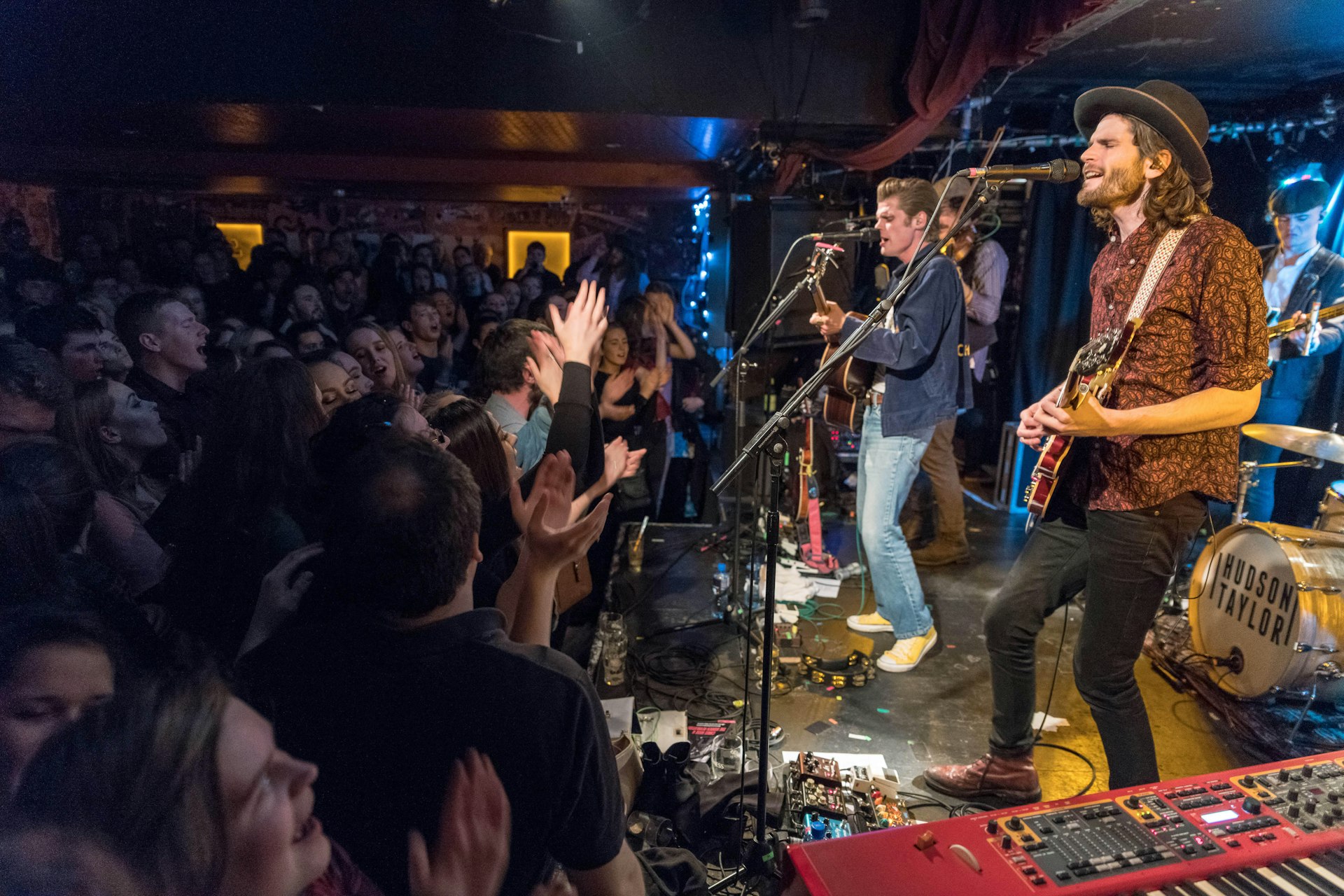
The happening scene on Camden Street and Wexford Street
But it’s not all gloom and doom or glass office blocks and luxury apartments. On any given night of the week, the Camden and Wexford Street strip is full of life. Each tribe has their spot to drink, eat and dance; suits, sports fans, ageing scenesters, indie kids, aul fellas, flower sellers and students hold the fort on different corners. A landmark for over 70 years, with artists like Damien Rice, Nick Cave and Glen Hansard playing intimate shows on its iconic wooden stage, Whelan’s remains the go-to music venue in Ireland. A late night spot for indie lovers, it’s the venue that emerging artists pine to perform on and established ones choose to return to. Across the road lies Anseo, a pub that is always wedged thanks to its niche soundtrack from DJs who spin ska, punk, folk and northern soul records.
While more traditional venues hold a soft spot for locals and visitors, there are newer kids on the block who provide something bigger. Street 66 is an LGTBQ+ hotspot that sees drag queens simultaneously play the tunes and swing from chandeliers and the queer club Mother plays electro music in Grafton Street’s Lost Lane as dancers sparkle underneath a shimmering disco ball every Saturday. Closer to the River Liffey, 39/40 on Arran Quay is an underground venue that runs grittier club nights and in the back room of the Asian restaurant Yamamori, Tengu is a staple for specialist nights in techno, hip-hop and R&B.
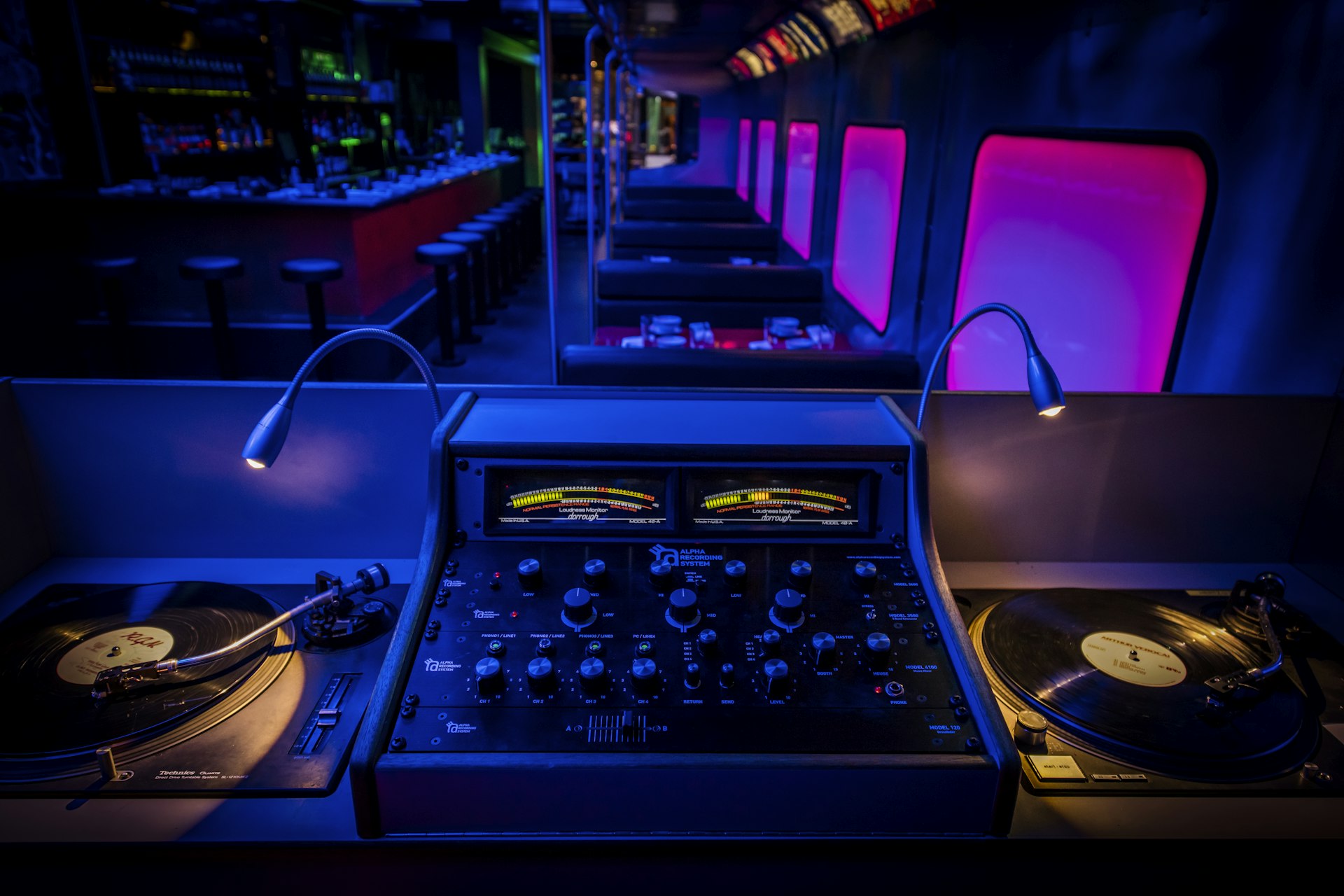
Born from the frustration at Dublin’s dwindling nightlife and adopted by those who have a hunger for more, we’ve bizarrely become accustomed to dancing in restaurants. Hang Dai is a Chinese restaurant that turns diners into dancers at the stroke of 11pm. as house music pumps through the custom-built sound system by Toby Hatchett. With an archived DJ roster that features Trainspotting novelist Irvine Welsh, the melodic techno of Norwegian artist DJ Fett Burger and Dublin’s own Discotekken, there’s a feeling that you’ve entered a new realm once you pass through the beaded curtain at the front door.
Placing an equal emphasis on good food and good music, Bodytonic run the Bernard Shaw (recently relocated to its new northside home in Phibsboro) and Wigwam (previously known as Twisted Pepper). With food trucks filling up Shaw’s outdoor area, known as the Eatyard, and Wigwam’s menu honoring Brazilian and Argentinian cooking, both venues call in a steady line of DJ collectives to play as dinner tables are pushed aside to create a dancefloor.
Across town on Meath Street, the old-style boozer Lucky’s serves up woodfire pizza as attendees knock back Guinness and vibe out to specialist techno and the French restaurant L’Gueleton on Fade Street doles out goblets of Aperol Spritz as DJs blasts R&B music until 2:30am.
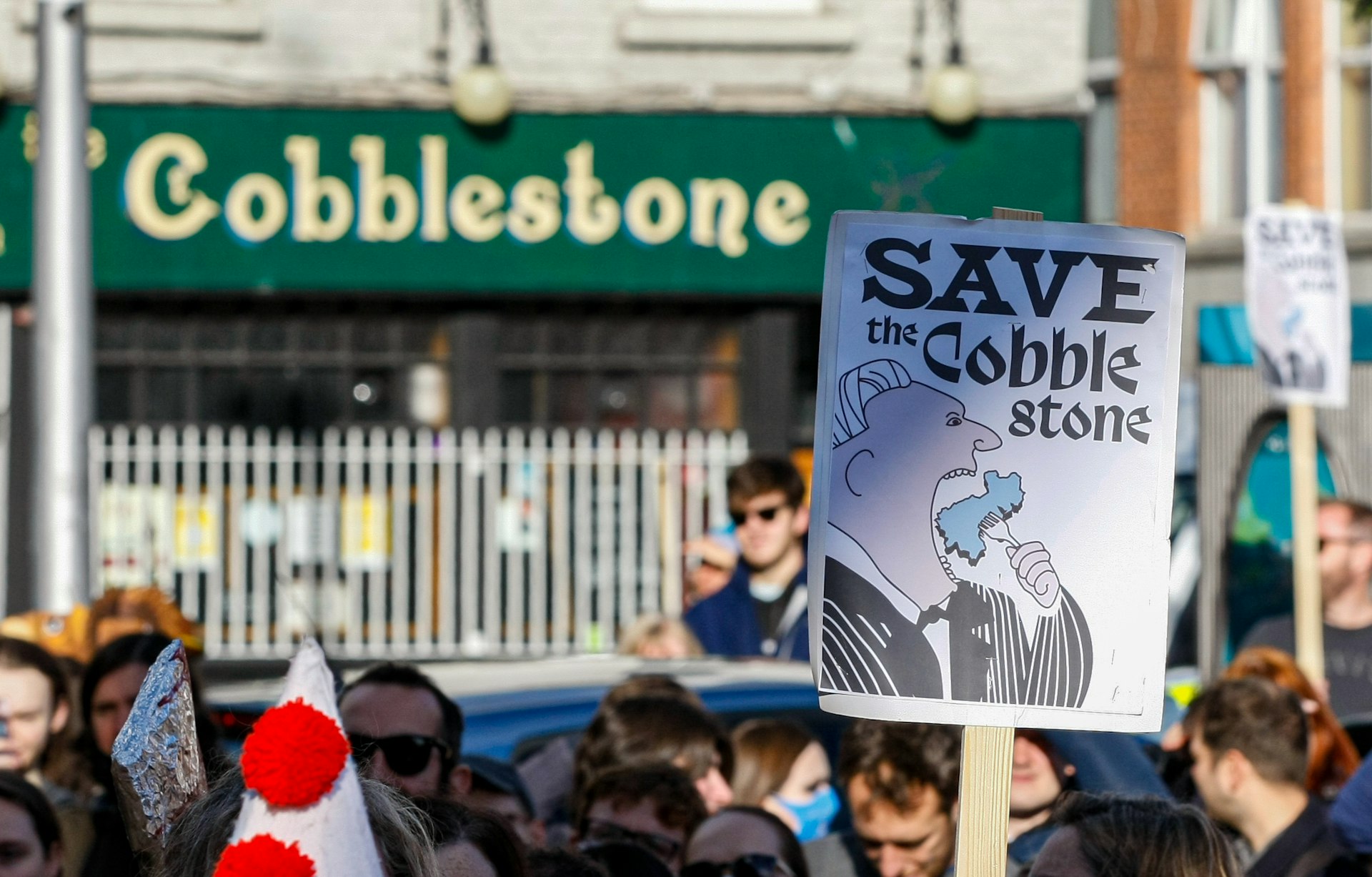
Keeping the nightlife scene alive
While Dublin’s nightlife is in a state of flux, it doesn’t mean that we don’t have one. For now, the focus is more on the community that creates it until we can start pinning events to permanent locations again. Assisting in this weary battle is Give Us the Night. An independent volunteer group consisting of people working within the night-time industry, they’ve been campaigning for positive changes to nightlife in Ireland, including the hopeful appointment of a night mayor and implementing staggered closing times.

By hook or by crook, the show must go on and the collective energy that went into saving Dublin’s traditional music pub The Cobblestone is an embodiment of that. When it was announced in October 2021 that developers were seeking permission to build a three-story hotel above the beloved Smithfield pub, people took to the streets, armed with bódhrans, folk songs and posted. The outrage was a success and the permission was refused.
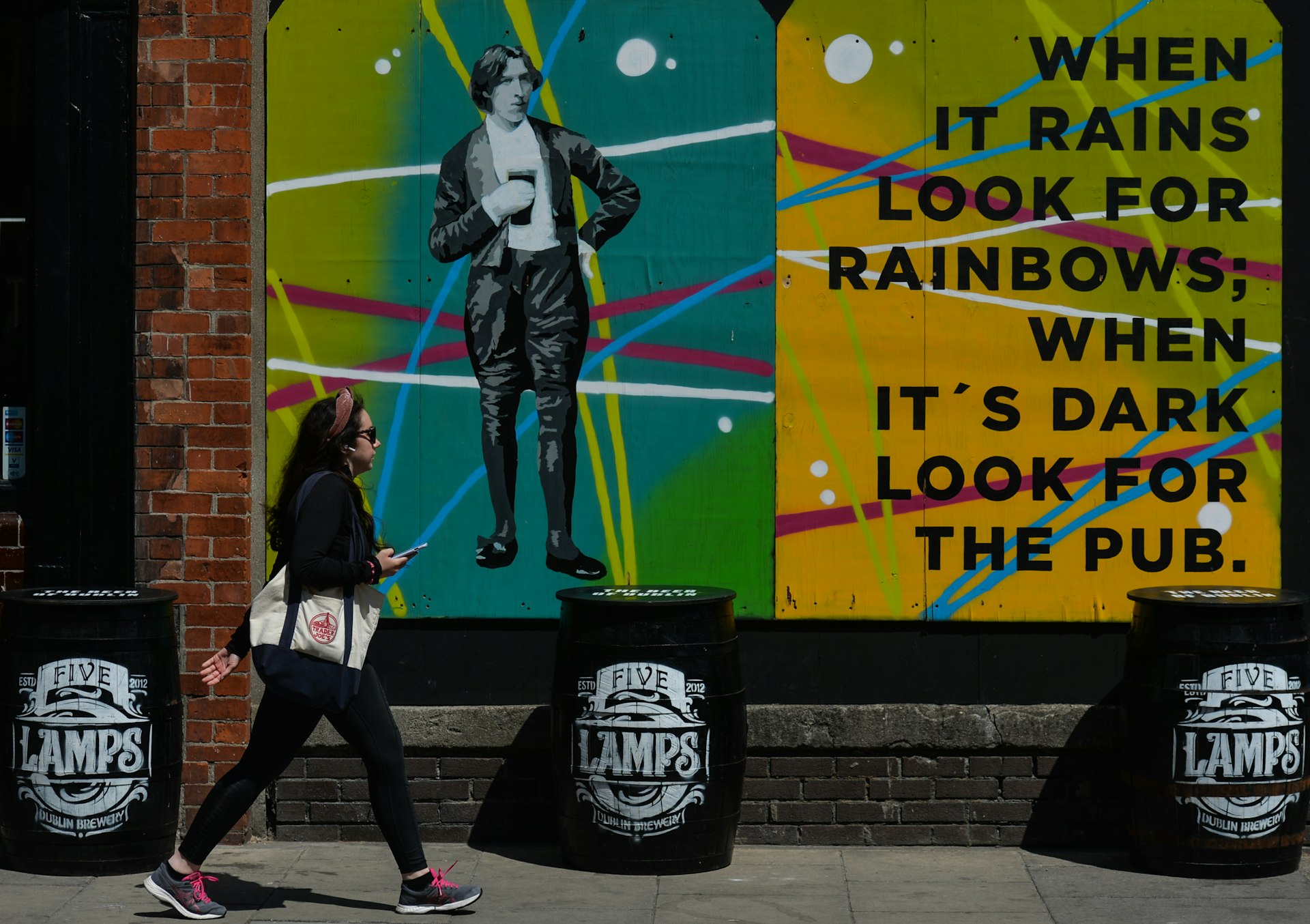
When I walk the streets now, newer memories join the fold. Art galleries remind me of pop-up gigs, museums contain the echoes of unique festivals and restaurants aren’t for dinner alone, they’re for debauchery too. I still laugh about the fully legal rave that happened in the back room of a butcher shop – yes, that really happened – and I marvel at the organizers who turned a bowling alley and children’s adventure center into a trippy, tropical party for chaotic ticket holders. These streets, they sing in both pride and protest and I hope that we never lose our voice.
Every building is just bricks and mortar but when you hear of great nights out and once-in-a-lifetime gigs, they become something more. Dublin’s nightlife is about the people and those people are filled with a new kind of determination to make Dublin a better place. For now, we have to seek the good times but trust that the good times will find us again.
Exploring Dublin's musical heritage
by Fionán McGrath
Irish Rock ‘n’ Roll Museum: Housed in the Button Factory, a functioning live-music venue and recording studio, this museum is the definitive guide to the bands that have emerged from Dublin. Featuring vintage recording equipment, actual musician’s instruments and paraphernalia (think Phil Lynott and Michael Jackson) and the opportunity to 'get the band back together’ by playing instruments in the recording studio, this is a memorabilia-filled rock treat.
Irish Rock 'n' Roll Music & Whiskey Tour: Combining two subjects of great historical and economical importance to Dubliners, this 2.5-hour walking tour takes in the top musical landmarks and allows you to stand where famous singers such as Van Morrison, Rory Gallagher and the Undertones started their careers. All fuelled by whiskey samples, the tour is great for true aficionados.
You might also like:
Dublin's 13 best city parks
Great beaches in Dublin
Best places to eat in Dublin in 2022
Dublin is on our 2022 Best of Travel list. For more stories from some of the world’s most exciting destinations click here.
Safety recommendations and restrictions during a pandemic can change rapidly. Lonely Planet recommends that travelers always check with local authorities for up-to-date guidance before traveling during Covid-19.
